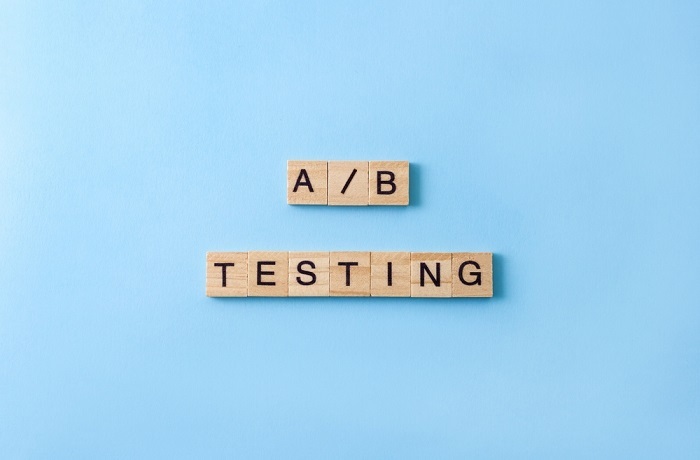
 Data Structure
Data Structure Networking
Networking RDBMS
RDBMS Operating System
Operating System Java
Java MS Excel
MS Excel iOS
iOS HTML
HTML CSS
CSS Android
Android Python
Python C Programming
C Programming C++
C++ C#
C# MongoDB
MongoDB MySQL
MySQL Javascript
Javascript PHP
PHP
- Selected Reading
- UPSC IAS Exams Notes
- Developer's Best Practices
- Questions and Answers
- Effective Resume Writing
- HR Interview Questions
- Computer Glossary
- Who is Who
How to Effectively Run an A/B Test on Your Landing Pages?
It's easy to celebrate the launch of your landing page after all the hard work that went into creating it. However, it's also important to keep in mind that this page is only the first step in achieving your goals. In order to improve its performance, it's important to regularly monitor its progress. A/B testing is a process that lets you see what changes can improve the effectiveness of your landing pages. It can also help you refine your pages and make them more engaging. Creating and implementing these changes can help you produce more leads. One of the most important factors that you need to consider when it comes to converting is the alignment of all elements.

A/B testing is useful because it allows you to measure the different behaviours of your audience. It can also help you identify areas where you can improve, but it can be very complex. This is why it's important to be careful when it comes to implementing this type of testing. In this tutorial, we'll talk about how it works and why it's important to be careful when it comes to making assumptions about your audience.
What is A/B Testing?
A/B testing is often misconstrued as a split test. It is a type of testing that involves comparing two versions of a piece of content. For instance, in A/B testing, you can create a new variation of the landing page headline and add a new item to the content. This will help you see which version of the page generates more conversions and click-throughs.
Getting A/B testing done on your landing pages can significantly improve your bottom line. You should regularly test your pages to make sure that they are serving up the right content for your customers.
How does A/B Testing Work?
A/B testing is a process that involves creating two different versions of a piece of content. After showing these two versions to two different audiences, you'll analyse which one performs better over time. This allows marketers to see how one version of their content performs compared to the other. There are two kinds of A/B tests that you can perform in order to boost a website's conversion rate.
How to Run an A/B Test on your Landing Pages?
Check the easy-to-follow steps for conducting an effective A/B test on your landing pages ?
User Experience Test
Getting a deeper understanding of how your visitors interact with your site can help you identify areas where you can improve. Use tools to get detailed information about your visitors' behaviour, such as their click-through rate and scroll distance. You can also collect other data, like the percentage of people who engage with your site's forms, which will help you understand their behaviour and their experience more effectively.
This concept is to test the effect of a new placement on a web page. For instance, you could create a new alternative HTML page that uses the new CTA (control) or the existing layout with the top CTA (challenger). Then, you'll test the two versions by showing them to a predetermined number of visitors.
Test one Thing at a Time
One of the most important factors that you should consider when it comes to A/B testing is to ensure that you only test one thing at a time. This will allow you to get the best possible results and make changes to your site. If you are testing multiple elements, you might end up confusing your audience and not knowing which ones are working for your site.
Define the "A" version
Creating version A for your A/B test is a bit easier than creating a whole new landing page. It's also less time-consuming if you already have one. However, if you're planning on building a new website, you might not have the existing one. In such a case, create one.
Have a Control Page
A control page allows you to monitor how changes to your page affect it. For instance, if you decide to add client testimonials, you can see how they affect your audience. You can also compare the performance of your old site with the new one.
A control element is a type of component that you need to implement in your experiments to determine their success. For example, if you're testing a website's features, you might want to create a control page that's the current landing page. This will allow you to monitor how it performs and make changes to it later on.
Use an A/B Testing Tool
You'll need to use a tool that's capable of testing both your website and email. In addition, you can also use Google Analytics to compare the performance of different web pages with a randomly selected group of users. Try to use tools that are easy to use, easy to understand, and that provide results with versatility.
Find Out How Long You Should run the A/B Tests
You need to decide how long you want to run A/B tests. It should be determined to ensure that they gather the necessary data. For instance, you don't want to make lasting changes based on the behaviour of only one person who visits each variation. Instead, you should gather data from your audience to make informed decisions.
Make sure that you allow your test to run for a long time to get a large sample size. If you don't let the test run for a significant amount of time, you might end up with a statistical tie between the two variations. Getting a statistically significant result can happen in hours or days, depending on your company's approach. Another important factor that you'll want to consider is how much traffic your website gets.
Conclusion
A/B testing is very important when it comes to building effective landing pages. It allows you to gain a competitive edge by testing different elements of your website. Before you start creating your landing page, make sure that you have a clear and consistent message. Then, test one of your elements against another. This process allows you to get a deeper understanding of what your audience wants to see in your content.

